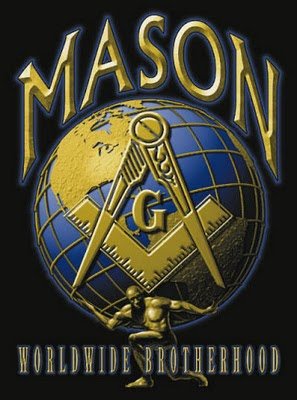 A Lodge (often termed a Private Lodge or Constituent Lodge in Masonic constitutions) is the basic organisational unit of Freemasonry. Every new Lodge must have a Warrant or Charter issued by a Grand Lodge, authorising it to meet and work. Except for the very few "time immemorial" Lodges pre-dating the formation of a Grand Lodge, masons who meet as a Lodge without displaying this document (for example, in prisoner-of-war camps) are deemed "Clandestine" and irregular.
A Lodge (often termed a Private Lodge or Constituent Lodge in Masonic constitutions) is the basic organisational unit of Freemasonry. Every new Lodge must have a Warrant or Charter issued by a Grand Lodge, authorising it to meet and work. Except for the very few "time immemorial" Lodges pre-dating the formation of a Grand Lodge, masons who meet as a Lodge without displaying this document (for example, in prisoner-of-war camps) are deemed "Clandestine" and irregular. A Lodge must hold regular meetings at a fixed place and published dates. It will elect, initiate and promote its members and officers; it will build up and manage its property and assets, including its minutes and records; and it may own, occupy or share its premises. Like any organisation, it will have formal business to manage its meetings and proceedings, annual general meetings and committees, charity funds, correspondence and reports, membership and subscriptions, accounts and tax returns, special events and catering, and so forth. The balance of activities is individual to each Lodge, and under their common constitutions and forms of procedure, Lodges evolve very distinctive traditions.
A man can only be initiated, or made a Mason, in a Lodge, of which he may often remain a subscribing member for life. A Master Mason can generally visit any Lodge meeting under any jurisdiction in amity with his own, and as well as the formal meeting, a Lodge may well offer hospitality. A visitor should first check the regularity of that Lodge, and must be able to satisfy that Lodge of his own regularity; and he may be refused admission if adjudged likely to disrupt the harmony of the Lodge. If he wishes to visit the same Lodge repeatedly, he may be expected to join it and pay a subscription.
Most Lodges consist of Freemasons living or working within a given town or neighbourhood. Other Lodges are composed of Masons with a particular shared interest, profession or background. Shared schools, universities, military unit s, Masonic appointments or degrees, arts, professions and hobbies have all been the qualifications for such Lodges. In some Lodges, the foundation and name may now be only of historic interest, as over time the membership evolves beyond that envisaged by its "founding brethren"; in others, the membership remains exclusive.
s, Masonic appointments or degrees, arts, professions and hobbies have all been the qualifications for such Lodges. In some Lodges, the foundation and name may now be only of historic interest, as over time the membership evolves beyond that envisaged by its "founding brethren"; in others, the membership remains exclusive.
There are also specialists Lodges of Research, with membership drawn from Master Masons only, with interests in Masonic Research (of history, philosophy, etc.). Lodges of Research are fully warranted but, generally, do not initiate new candidates. Lodges of Instruction in UGLE may be warranted by any ordinary Lodge for the learning and rehearsal of Masonic Ritual.
Freemasons correctly meet as a Lodge, not in a Lodge, the word "Lodge" referring more to the people assembled than the place of assembly. However, in common usage, Masonic premises are often referred to as "Lodges". Masonic buildings are also sometimes called "Temples" ("of Philosophy and the Arts"). In many countries, Masonic Centre or Hall has replaced Temple to avoid arousing prejudice and suspicion. Several different Lodges, as well as other Masonic or non-Masonic organisations, often use the same premises at different times.
According to Masonic tradition, medieval European stonemasons would meet, eat, and shelter outside working hours in a Lodge on the southern side of a building site, where the sun warms the stones during the day. The social Festive Board (or Social Board) part of the meeting is thus sometimes called the South. Early Lodges often met in a tavern or any other convenient fixed place with a private room.


















